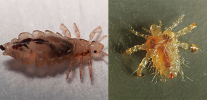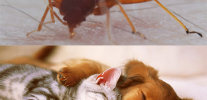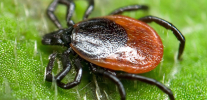
The true number of different types of ticks, open and described by zoologists, is thousands of times greater than the number of them that the average resident of the planet knows. If you ask any person to name the types of ticks known to him, then most likely he will remember only 2-3 names, at best - up to 5, and, rather, he will name not specific species, but certain groups, varieties corresponding to one or another characteristic .
For example, almost all the inhabitants of Eurasia are well known ixodid ticks - the ones among which there are carriers of tick-borne encephalitis, a deadly disease. Quite a few people also know about itch itchies (and not only those who were sick of scabies themselves), but spider mites are well known to gardeners and flower growers. These species, as well as dust mites and dye mites, are probably the entire “set” known to the general public.
For example, the photo below shows a well-known dog tick - the main carrier of tick-borne encephalitis in the European part of Russia:
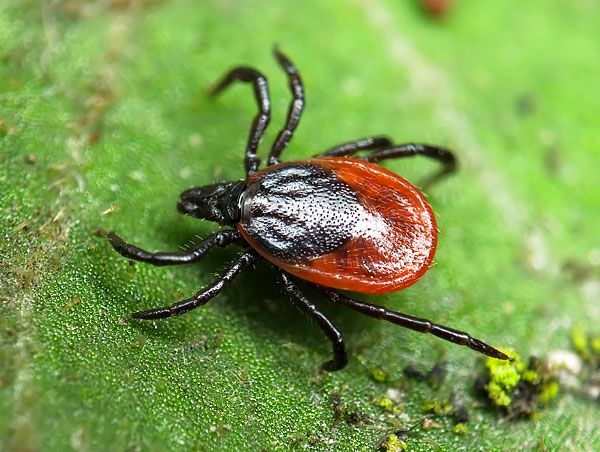
And this creature with a complex body shape is a scabby itch (photo taken using a microscope):

Today, science describes more than 54 thousand species of ticks, and their number is constantly increasing due to the discovery of new members of this group of arthropods, many of which are microscopically small. Scientists suggest that about a million different species of ticks live on Earth, and they have yet to give names.
On a note
In terms of species diversity, ticks surpass even the detachment of spiders - the latter numbering just over 42 thousand species.
Compared with the number of studied mite species living today, not too many fossil forms of them are described - about 150. This is partly due to the fact that the remains of mites that lived in previous eras are difficult to find and identify. In addition, there is a hypothesis that currently this group of arthropods is experiencing its heyday - living conditions on the modern Earth are optimal for ticks, and this contributes to active speciation in many of their genera and families.
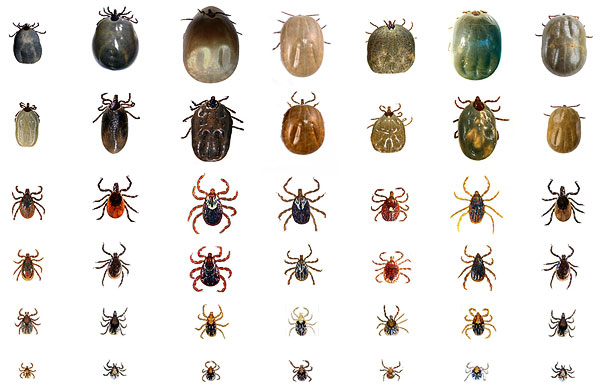
Today, ticks have firmly established the reputation of parasites that are dangerous to the health and life of people and pets. Not surprisingly, the very name of this group for the average person sounds somewhat ominous, in common parlance having had time to turn into a common name.
However, in reality, most ticks are completely harmless to humans and animals. The most extensive in terms of the number of species in the group are saprophagous mites that live in the soil and feed on decaying remains of dead plants and animals. These creatures are extremely useful for biocenoses, and not only do not harm, but also bring great benefits to natural ecosystems and agriculture.
Moreover, people use some species of ticks for their own benefit - in order to protect plants from parasites and in scientific research. The photo below shows an example (predatory mite phytoseiulus attacks spider mites):
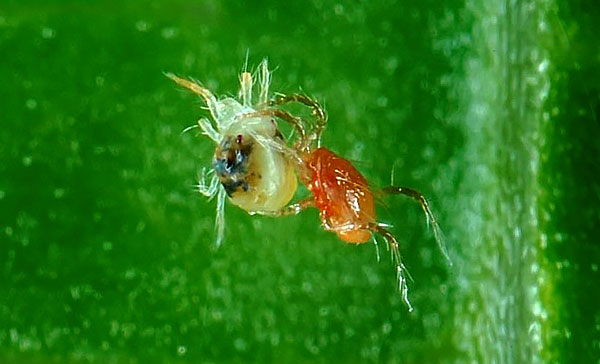
On a note
Some mites are either parasites or symbionts, depending on the state of health of the host.
General view of the diversity of tick species
Ticks (Acari) are combined into a large subclass in the arachnid class.Interestingly, the spiders themselves in this class form a detachment, and among ticks, scientists have identified several different orders, and therefore for their association had to form a subclass.
The variety of mites is exclusive even for the type of arthropod. Among them are both microscopically small forms that can only be distinguished through a microscope, and animals with a body size of up to 10 mm (especially after saturation). They have a very varied color, different body shapes and very effective and fancy accessories for their lifestyle. It is not surprising that it is not so easy to give a general description of this subclass.
The photo below shows the Argass mite:

In the subclass of ticks, there are species with virtually all known forms of nutrition in animals - herbivorous, predators, parasites, and even omovampiry (attacking well-fed fellows and sucking the contents of their bodies).
Ticks live in a variety of biotopes, from dry steppes to tropical forests, from earthen bedding to carpets in apartments. There are even known species that live under water. In large quantities, they inhabit the upper layers of the soil, where sometimes hundreds of individuals are found in 1 cm3 of land.
Not surprisingly, these invertebrates have spread throughout the world. They inhabit all continents, including Antarctica, where they constantly live in nesting places of seabirds, parasitizing on them in nests. According to the conditions of life, they acquired various adaptations - a strong, or, on the contrary, a soft body, the ability to starve for a long time, a high reproduction rate, special devices for fastening on the host's body (for parasitic forms) and many others.
A significant problem is the classification of all this species diversity. As a rule, they are divided into groups according to anatomy, various physiological features and lifestyle. Groups of the same order (taxa) are included in the composition of higher associations, as a result, groups and families are formed, each of which is characterized by certain features of their representatives.
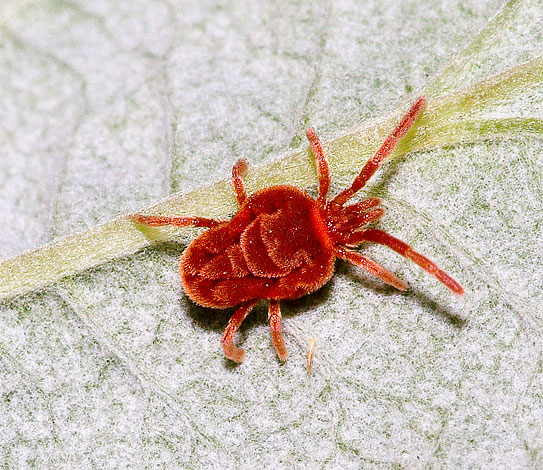
Thus, the entire Acari subclass is divided into such supernatants:
- Parasitiform ticks, which included more than 12 thousand species. In this super-detachment, a detachment of ixodic ticks (the very ones that carry encephalitis), a detachment of mesostigmata (among which phytoseiulusus mites are known, are distinguishedwidely used in agriculture for the destruction of mites that damage plants) and gamasid mites (animal and human parasites, some species of which are known for very painful bites). Also, parasitiformes include highly original mowing pliers, more like spiders;
- Acariform mites, among which the scabby itch, granary mites, armouflaged, feather (not always parasites, and sometimes only commensals) and carnivorous mite mites are especially known. The most famous human parasites from this super-detachment belong to the group of sarcoptiform ticks.
This division is very conditional. The systematics of the subclass is constantly reviewed, and many experts offer their options for dividing the group into subgroups. In particular, the allocation as a super-order mowing pliers for their very specific structure.
The photo below shows mites (Opilioacarus segmentatus):

Among the ticks, there are especially noteworthy representatives who are worth mentioning separately ...
Parasitiform ticks
This nadryad is remarkable in that it includes the most famous ticks in the nation - ixodid, the very onescity dwellers of middle zone of Eurasia are panicked for the fact that some members of certain species of them may be infected with tick-borne encephalitis virus and, if they are bitten, can infect a person with it. Since this disease is deadly, intensive care is required after infection, while reliable prevention of the disease is quite complicated.
More details about ixodic ticks will be discussed below, but now we’ll dwell on the features of the supra-order parasitiform ticks. It is noteworthy in the first place because compared to acariform, its representatives are considered to be evolutionarily more developed. Some of them have certain aromorphoses, making them highly specialized parasites. In other (predatory species), the features of the structure indicate a significant evolutionary progress towards increasing the efficiency of reproduction and the survival of the offspring.
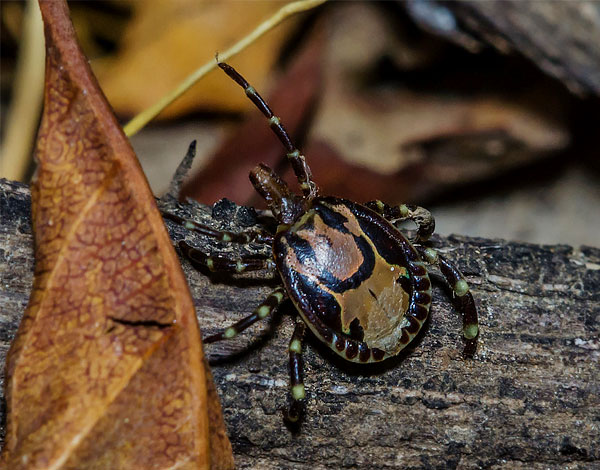
Another interesting feature of this group is its very low representation in the paleontological remains. The reason for this “gap” in the evolutionary record is not fully understood, but this is what leads to difficulty in tracking the path of development of this group of ticks.Some soil gamasid mites are considered to be the closest to the original forms, and various predatory forms of the same group are considered the most highly developed. Although it is unequivocal to talk about the evolutionary superiority of one group to another is not entirely correct.
Among parasitiform ticks are predators, saprophages (and feeding on both dead animals and plant debris), and parasites. Interestingly, the parasitic forms here demonstrate truly unique adaptive qualities. For example, in this order there are cavitary parasites (a relative rarity for arthropods) - forms that live inside the organisms of host animals. This, in particular:
- Mites of the Entonyssidae family colonizing air bags in snakes;
- Rhinonyssidae settling in the nasal cavity of birds;
- Halarachnidae - parasites that affect the trachea and lungs of mammals.
It is believed that these families are descended from nesting trap parasite mites.
The photo below shows the parasitic mite Pneumonyssoides caninum in the dog’s nasal cavity:
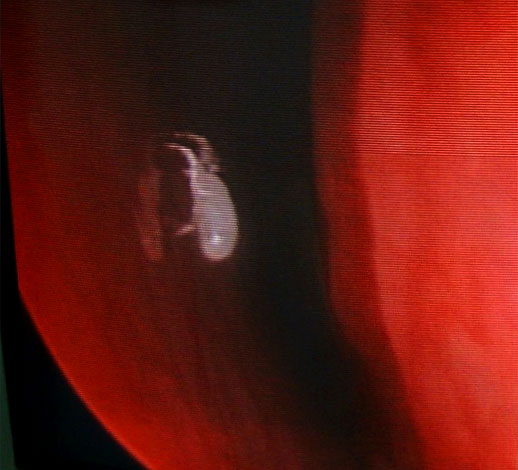
On a note
It is incorrect to speak about saprophyte ticks. Only microorganisms are referred to as saprophytes - bacteria or unicellular fungi. Ticks that feed on decaying organic matter are called saprophagous.It is also incorrect to call ticks saprotrophs - the fundamental difference between saprotrophs and saprophages is that saprotrophs are not left after feeding on solid waste products (excreta), and saprotrophs are left.
A remarkable group in this super-detachment is uropod mites, which mainly inhabit the soil. Among them are:
- species that have a predatory lifestyle, and some of them are very highly specialized — for example, they only suck out soil nematodes or live only in anthills;
- parasitic forms, mainly affecting insects and other arthropods;
- saprophages;
- as well as species sucking the sap of plants.
But still the most famous among parasitiform ticks are Ixodides. Consider them in more detail.
Ixodides as the most famous parasites
Ixodes, belonging to the family Ixodidae, are highly specialized, awaiting parasites of vertebrates, including humans. Both the larvae and adults feed on their blood, clinging to the outer covers of the host, biting through the skin and the wall of the blood vessel.
The oral apparatus of these parasites is adapted not only for sucking blood, but also for secure attachment to the host.It is very difficult to tear off a sucking tick - in some cases, if it is not properly removed, its body detaches from the head, which remains in the skin of a person.
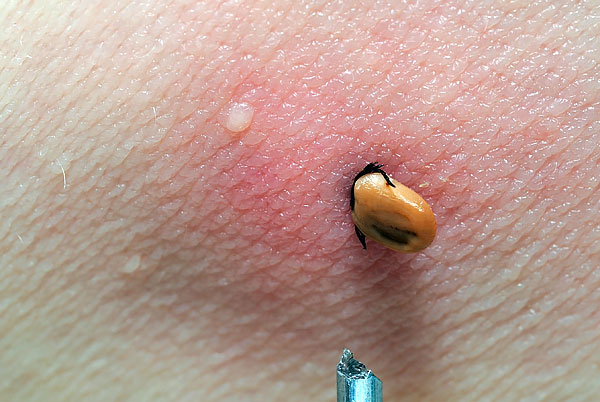
It is interesting
Ixodic mites, along with scabby itchiness and iron mites, are one of the most common types of people. At the same time, most people do not know about ironcats at all (although almost every adult has these parasites). A scabies itch is not perceived as a serious danger due to the relative ease of treatment of scabies they cause.
The reason for concerns about Ixodic tick bites among residents of the forest-steppe and forest zones of Russia, Ukraine, Belarus and some Western European countries is infection of a certain part of the populations of parasites with tick-borne encephalitis and lime borreliosis infections — deadly diseases to humans.
According to statistics, only 6% of ticks, even in the most epidemiologically dangerous regions (Siberia and the Urals, the western outskirts of the European part of Russia, the north and north-east of Ukraine, the western part of Belarus) are infected with tick-borne encephalitis virus. Moreover, even with the bite of an infected tick, the risk of developing the disease is approximately 4%.In fact, an average of 2-3 cases per 1000 bites of ixodic ticks. This is not so much, but the deaths from tick-borne encephalitis and the high frequency of bites in some regions have provided disrepute to these parasites.
The most epidemiologically significant species are:
- The dog tick (Ixodes ricinus) is the main carrier of tick-borne encephalitis in Europe. Widely distributed in the Leningrad and Moscow regions, but encephalitis is extremely rare. It belongs to the species inhabiting open biotopes - pastures, fields, meadows;

- Taiga tick (Ixodes persulcatus) - "replaces" a dog tick in Siberia, the Urals and the Far East, it is also the cause of the greatest absolute number of infections with tick-borne encephalitis. In terms of its ecology, it is a more “forest” species than a dog tick;
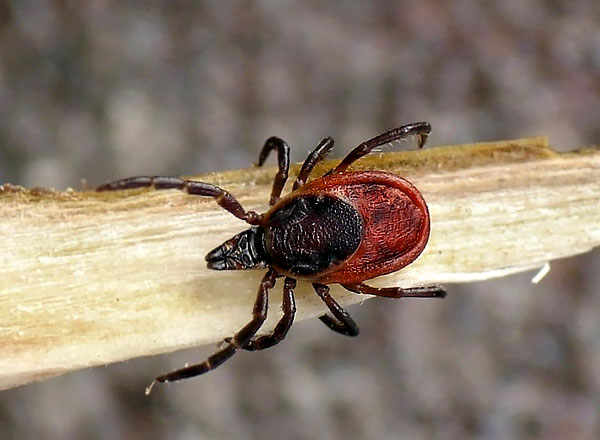
- The Australian tick, Ixodes holocyclus, lives along the east coast of Australia and is notorious for biting off a neurotoxin in the wound that can lead to paralysis;
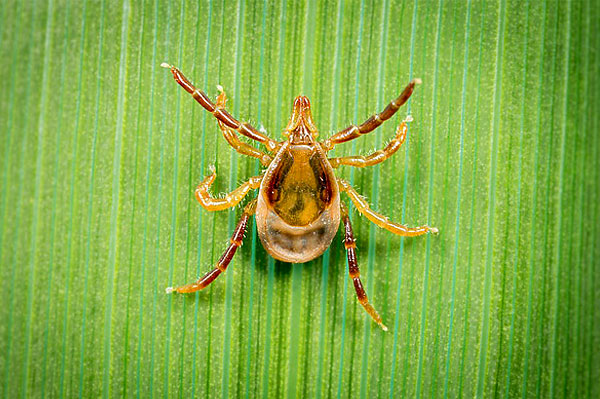
4. Ticks of the genus Hyalomma (chialoma), carrying some types of hemorrhagic fevers.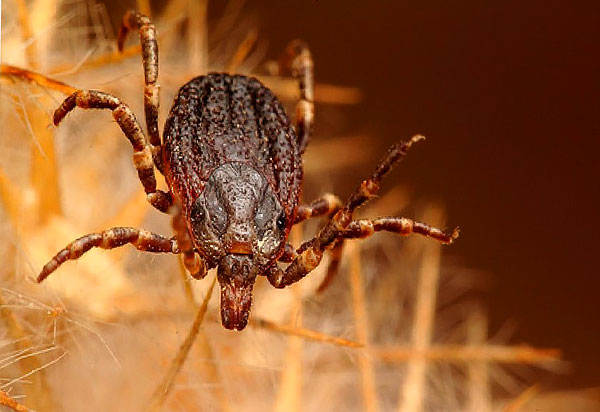
Tick-borne encephalitis carries several more types of ticks: Ixodes pavlovskyi, Haemaphysalis concinna, Dermatocentor marginatus and others.A total of 14 species that look quite similar to each other, and in some cases it is extremely difficult to identify them (especially if we are talking about immature individuals). For this reason, the common name is fixed in the people - “encephalitic tick”, which sometimes also applies to those types of ixodides that do not transmit the virus, but outwardly resemble true carriers.
On a note
It is ixodic ticks that are most often confused with bedbugs - also blood-sucking human parasites. However, there are more differences between these creatures than similarities. At least, all ticks have 8 legs, and bedbugs have 6. In addition, bugs attack a person in a dwelling, and ticks on nature. The bugs bite quickly and try to hide at the slightest danger, while Ixodides until the last try to hold onto the host’s body, and sometimes it is extremely difficult to tear them away from the skin.
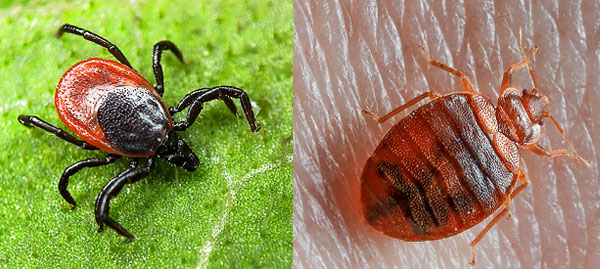
Also among the Ixodides it is necessary to mention Argas ticks, also mostly parasites, but mostly nesting. Many of their species live in the burrows of mammals in steppes and deserts, they eat occasionally, when either a permanent host or an occasional guest is found in the hole.It is notorious for carrying tick-borne relapsing fever.
Gamasid Ticks
This group is very diverse, there are predators, parasites, and various types of commensals, which do not cause harm to animals with which they cohabit, but do not provide any benefit.
Notable, for example, are the myrmecophilous mites Antennophoridae, which live in anthills, attach themselves to the lower part of the ants head and feed on the leftover food left on the jaws of ants. The photo below shows an example:

Other species are parasitic on bees, as well as on pests of various crops.
Gamazovy saprofaga mites in large quantities inhabit the corpses of animals and insects, feces, other organic debris. It is noteworthy that these species settle on various scavengers. For example, if it is easy to tap a dried crust on a dried manure crust, imitating the touch of a fly or a rat, hundreds of macrogel's ticks or calyphos are immediately selected on the surface of the crust, ready to grab onto an insect so that they can “fly” to the new forage substrate.
The photo shows a scarab beetle plastered with ticks:
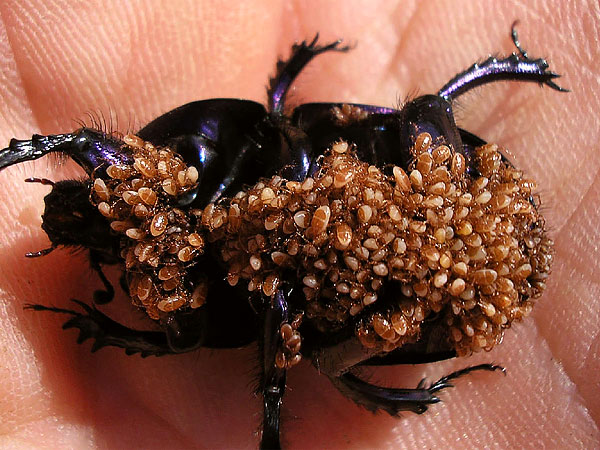
The greatest economic importance in this group are chicken and bird ticks, parasitic in the nests and often leading to the freezing of birds in various farms. With a strong hunger, they can bite people, which causes severe itching.
Granary mites
The tracing name for this group in Latin is thyroglyphoid mites. The group received its Russian-language name for the fact that its representatives very often settle and multiply in enormous quantities in the storage of agricultural products. Here, various species feed on grain, husk, mold fungi, animal products.
It is interesting
Among the mites, there are also species that parasitize insects that harm stored products - grinder bugs, hides, weevils, and moth bugs.
The most notable among barn mites are the following types:
- Flour mite damaging flour, starch, bran, various products of grain processing;

- Cheese mite, which is often found in long-stored cheeses;

- Sugar mite, damaging sugar and raw materials for its production;

- Wine mite, settling on the surface of the wine, if the container with it is not closed tightly;

- Bulb mite, pest stocks of onions, potatoes, garlic, beets.

All of them lead to damage and deterioration in the quality of stored products.
A particularly remarkable feature of barn mites is their ability to survive when they enter the human digestive tract. Here, these arthropods can bite into the intestinal epithelium, eat mucosal cells or food that enters the intestine, and cause a disease called intestinal acariasis. As a result, develop abdominal pain, nausea, allergic reactions. There is evidence that in some cases, sugar, cheese and grain mites can even multiply in the gastrointestinal tract in the absence of oxygen - in some patients in the rectum and excrement a large number of these parasites were found at different stages of development.
Itchy
Under this name, several genera of intradermal parasites of humans, other mammals and birds are combined. Representatives of this group have mastered a very original form of parasitism - they bite into the skin, constantly piercing it in it,feeding on skin cells and secretions of skin glands, and females lay eggs in the skin as they live.
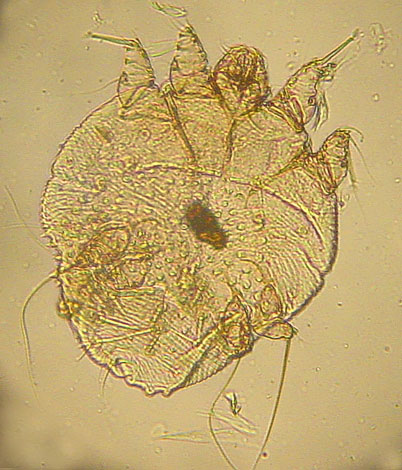

It is interesting
The scabies of itching can sometimes be seen under the skin with the naked eye - they look like a mesh of lines.
The larvae that come out of eggs feed on the epidermis for some time in maternal passages, turn into nymphs, crawl to the surface of the skin, where males turn into adults and mate with immature females. After that, the females gnaw into the skin and begin to make their own moves.
The vital activity of scabies pruritus causes severe itching in a person - the disease itself is called scabies. Similarly, scabies can be observed in cats, dogs, rats and many other animals.
Zheleznitsa
Zheleznitsa - very specific mites. At least in appearance, they are very different from other ticks, because they have an elongated back part of the body that looks like a tail. At the same time, their length together with such a “tail” is no more than 0.3-0.4 mm.
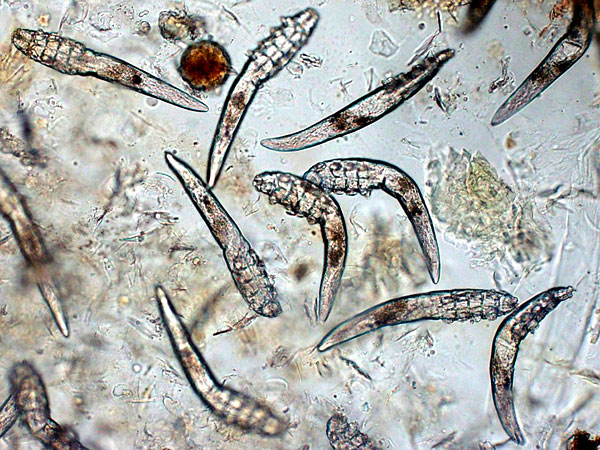
The most interesting of these ticks is that they constantly live on the human body. Of these, the two most common types are:
- Demodex folliculorum - most of the time lives in the hair follicles;
- Demodex brevis - inhabits the sebaceous glands, the secret of which is displayed in the hair follicles.
Both species feed on secretions of the glands and normally do not harm humans. However, with abundant reproduction, they can cause demodicosis, a dermatological disease in which peeling of the skin occurs, foci of inflammation develop and itching occurs.
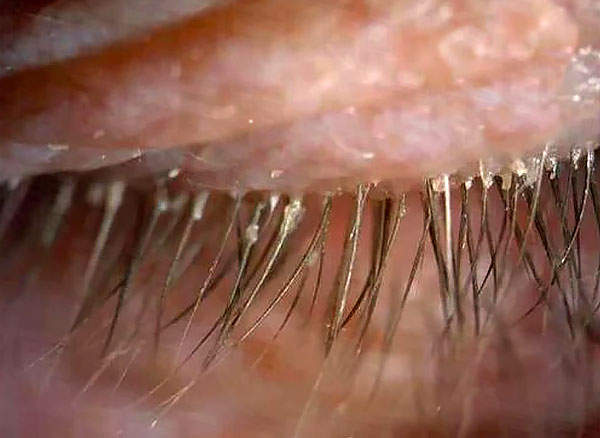
According to research data, these ticks are widespread - almost 100% of the world's population is infected with them. And precisely because the infestation by them practically does not manifest itself in any way, most people do not even know about such infection, just as they do not know about the existence of the iron-works themselves.
The so-called dust mites (Dermatophagoides sp.)
This group includes several species of very small ticks that have adapted to human habitation and feeding here with peeling skin particles present in household dust.
It is known that each person loses approximately 1.5 g of dry dead epidermis per day - it is him who is consumed by these creatures. And this amount of "food" is enough for the existence of a population in the room.
It is interesting
Today, the ability of dust mites to eat, including molds, has been discovered.
Due to the microscopic size, dust mites can settle inside the mattresses and upholstered in upholstered furniture, where it is almost impossible to drive them out. They also inhabit carpets in large quantities, the cracks behind the baseboards, dust in the corners of the room, and therefore the struggle with them in most cases is a difficult task.
The photo below shows the Dermatophagoides pteronyssinus dust mite in the carpet:
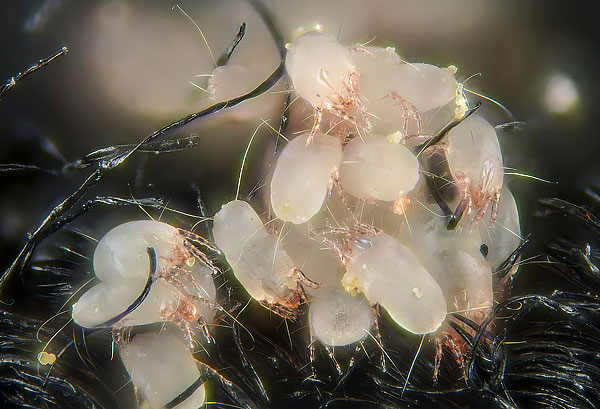
At the same time, dust mites can cause severe allergies. It is believed that most cases of asthma develop in response to the constant inhalation of air, which is covered with dust from the excrement and chitinous covers of these creatures. The excrement contains specific digestive proteins that cause sensitization in humans.
Types of spider mites, harmful to agriculture
Perhaps, of all the ticks that are pests of agriculture, spider webs are best known.
First, they are diverse and more than 1,200 species of them are known. Secondly, they are very versatile in nutrition. The typical species of this family - the common spider mite - is widespread throughout the world and affects at least about 200 species of plants. Moreover, these 200 species - only those that are known to scientists.Perhaps the diet of this tick is even more diverse. It is capable of striking most of the garden crops grown in central Russia, but most of all it suffers from cucumbers, tomatoes, eggplants, bell peppers and strawberries.
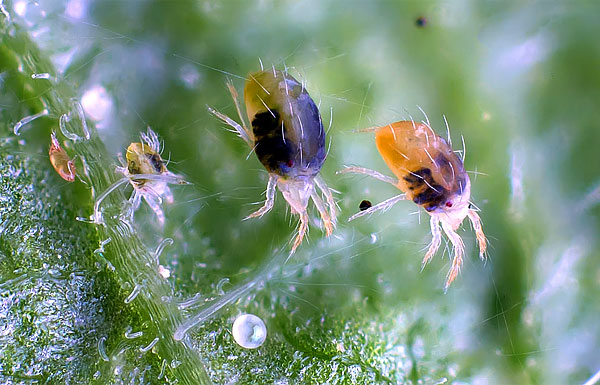
His relatives are less universal, but they are no less harmful. Gardens, hawthorn, citrus and other mites of this group are considered to be a real disaster in the gardens.
Finally, spider mites lead to serious damage to plants, significantly reducing the yield of fields and gardens. In addition, mites infect flowers and trees in natural biotopes.
On a note
This group of pests received its name because, by infecting plants, ticks entangle their habitat with a thick web, in which, as in a shelter, they feed and reproduce.
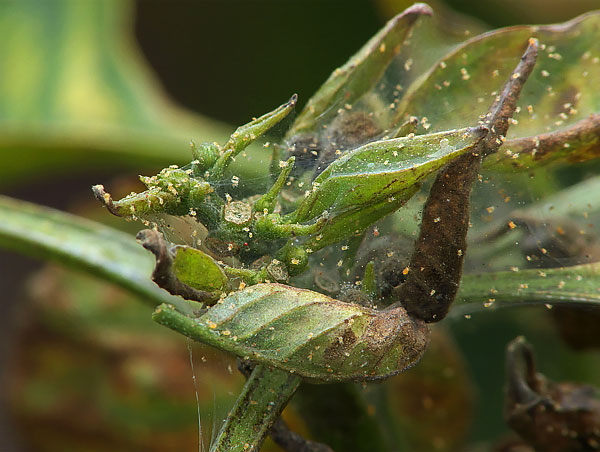
It is not surprising that spider mites are actively fighting, and the most effective and rational way to destroy them is to attract other mites to this ...
Enemies of spider mites - phytoseiulus
Phytoseiulus is the most numerous family of gamasid mites. They number more than 2000 species, the overwhelming number of which are voracious predators, destroying many small invertebrates.
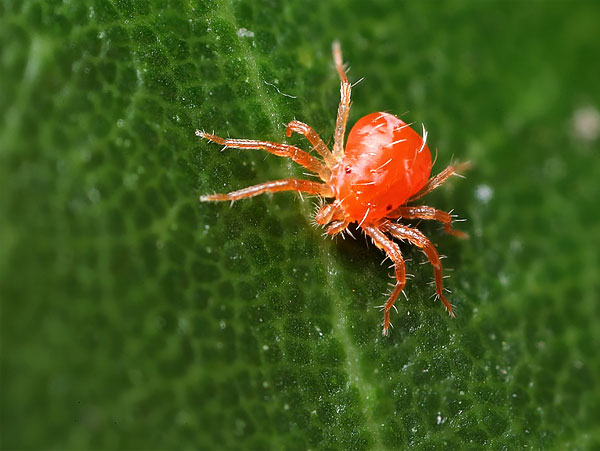
In this group, Phytoseiulus persimilis, which is used in the biological control of spider mites, has the greatest economic importance. One adult individual of this predator eats up to 20 adult spider mites, their eggs and larvae per day, and the more intensively it feeds, the more eggs it lays and the more voracious larvae and nymphs are born.
On a note
Phytoseiulyuses feed not only on spider mites, but also on thrips, nematodes and some other harmful invertebrates. Therefore, their use in biological control is considered a complex method of protecting plants.
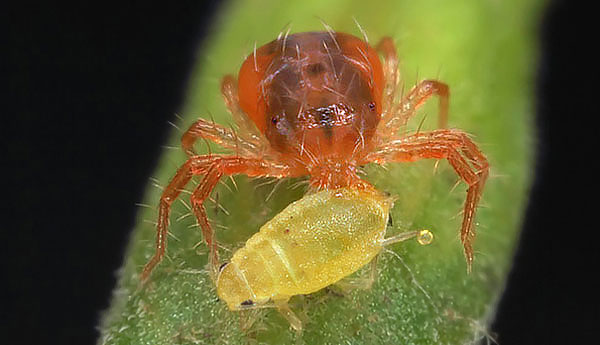
Today in Europe, nurseries are already working on growing phytoseiulus, which are sold in lots to greenhouses and garden farms. Here they are released on plants, and within a few weeks their number is rapidly growing due to a decrease in the number of spider mites. So it is possible to protect the crop without insecticides and other chemicals.
Redies mites and other predatory species
These mites saw, perhaps, every man. They come across in large quantities in spring and early summer under stones in the forest or in vegetable gardens, where they move smoothly, as if they “float” on the ground in search of their victims - small insects and other ticks.

It is interesting that the larvae of the reddish beetles are parasites, and only when they mature they pass on to a predatory way of life. They parasitize insects, but can bite and vertebrates, including humans.
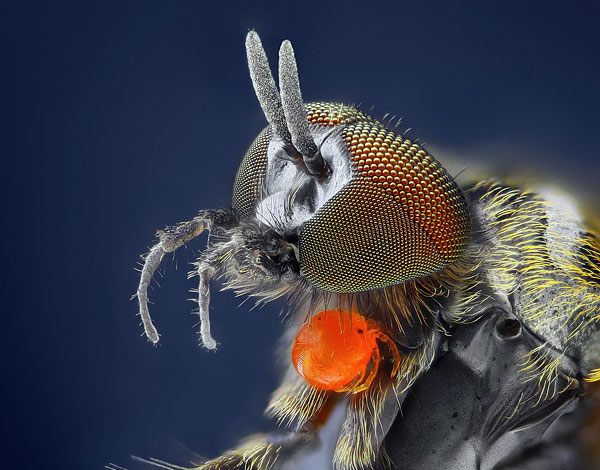
In Japan and the Pacific Islands, these mites carry the tsutsugamushi fever pathogen.
Feather mites like parasites of birds
Representatives of this group are of significant economic importance, since they can cause serious diseases in poultry.
Normally, these ticks are commensal and do not lead to serious consequences for birds. They live in the feathers and feed on their walls. Each has its own colony reformed, from which ticks can move to neighboring feathers.

Wild birds usually carry out some hygienic procedures that help control the number of these ticks, and a significant proportion of such “predators” die during molting. However, when keeping birds in close enclosures, ticks multiply here in large quantities, cause itching, inflammation, breaking off feathers, which is why birds do not gain the necessary weight and even die.
The most famous parasite of this group is Syringophilus bipectinatus, which parasites on chickens, guinea fowls, turkeys and other birds, causing them to have a specific disease, syringophilosis.
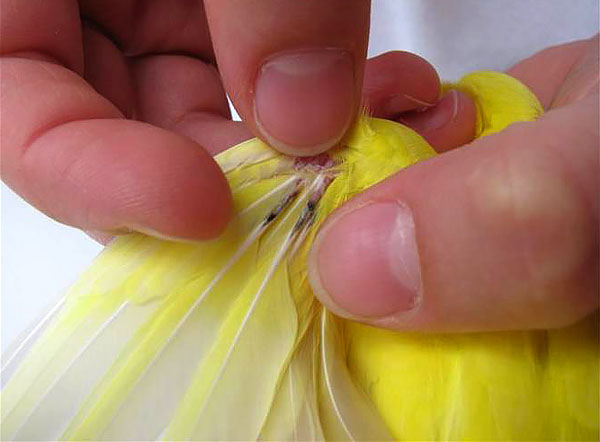
Oribatid mites as carriers of helminthiasis
Oribatides are generally considered to be useful mites involved in soil formation. Millions of them can live in one cubic decimeter of forest soil - they constantly eat the remains of plants and animals and turn them into a substrate that can be digested by plants.
The ability of oribatids to distribute helminth eggs is important. Thus, some species of this group of ticks eat the eggs of the Lenteps of the Anoplocephalata family, after which the larvae hatch from their bodies in their bodies, and then the mites themselves are eaten with plants by cattle. Already in the digestive tract of the animal, the mites die, and the helminth larvae are released and penetrated into the intestinal epithelium, causing moniesiosis. This disease leads to a slowdown in the growth of young cows, sheep, goats, to a decrease in milk yields and sometimes even to the death of animals.
The photo shows a winged mite of the Galumnidae family, a carrier of cattle helminth infections:
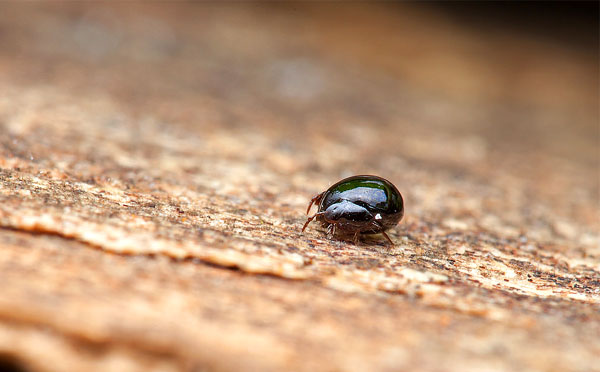
In conclusion, we note that even the main groups of ticks are difficult to examine at least briefly. Nevertheless, the above information is already enough to roughly imagine the diversity and the huge number of varieties of ticks, as well as their significance for ecosystems and human life.
Interesting video: TOP 5 most dangerous types of ticks for humans
What are dangerous ticks, which can be found in nature

